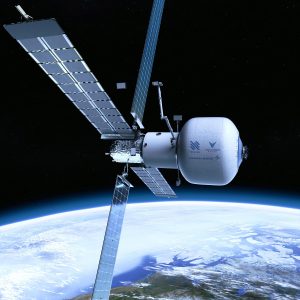
Lockheed Martin has announced its involvement and Starlab – operating in low-Earth orbit – is planned to achieve initial operational capability by 2027. The company will be designing and building the habitable area on the station.
CLD
NASA, earlier in the year, announced the Commercial Low-Earth Orbit (LEO) Destination (CLD) project to support the development of private space stations. CLD will stimulate a multifaceted LEO economy and provide science and crew capabilities in LEO before the International Space Station (ISS) retires.
“We’ve seen great success with our commercial partnerships, first commercial cargo and now commercial crew,” said Phil McAlister, the director of Commercial Spaceflight Development at NASA Headquarters, back in March 2021. “With commercial destinations, we believe it will create a self-sustaining and self-reinforcing low-Earth orbit economy – one where the private sector is the main player, and NASA is one of many customers.”
The basic elements of the Starlab space station will include a large inflatable habitable area, a metallic docking node, a power and propulsion element, a large robotic arm for servicing cargo and payloads, and a state-of-the-art laboratory system to host a comprehensive research, science, and manufacturing capability. Starlab will be able to continuously host up to four astronauts for conducting science and research.
“We’re excited to be part of such an innovative and capable team—one that allows each company to leverage their core strengths,” said Lisa Callahan, vp and general manager of Commercial Civil Space at Lockheed Martin.
“Lockheed Martin’s extensive experience in building complex spacecraft and systems, coupled with Nanoracks’ commercial business innovation and Voyager’s financial expertise allows our team to create a customer-focused space station that will fuel our future vision. We have invested significantly in habitat technology which enables us to propose a cost-effective, mission-driven spacecraft design for Starlab.”
We’re thrilled to introduce #Starlab. Led by @Nanoracks, and in collaboration with Voyager Space and @LockheedMartin, #Starlab brings a sustainable business model to #LEO. We’re enabling science and manufacturing, adding value to sovereign astronaut missions, and so much more. https://t.co/RaXxGIZQ6C
— Voyager Space (@VoyagerSH) October 21, 2021
You can read more about Starlab here.
Axiom Space
Plans for Starlab have competition from Houston-based Axiom Space, which is also aiming to develop the first commercial space station in operation. It has raised $130m in Series B funding, we reported back in February 2021.
The idea is that Axiom Station will serve as a centre for commerce in Earth’s orbit.
In January 2020, NASA selected Axiom to begin attaching its own space station modules to the International Space Station (ISS). This should happen as early as 2024, as part of NASA’s wider strategy to commercialise LEO (Low Earth Orbit).
While in its assembly phase, Axiom Station will increase the current usable and habitable volume on ISS and provide expanded research opportunities. By late 2028, the company expects its station to detach when the ISS is decommissioned and it should then operate independently as its privately-owned successor.
NASA itself will be replacing the ISS with the Lunar Gateway station.
Image: Artist’s impression of Starlab